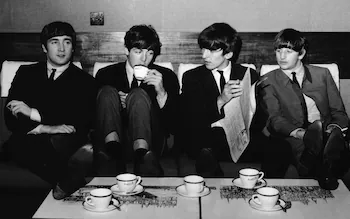This article initially featured in our autumn 2024 print edition.
When one thinks about the relationship between feminism and hip-hop, the connection is not always a positive one. The sexualisation and misogyny present in rap are well-known issues, yet one would be wrong to condemn the entire genre.
During the golden age of the 90s, most rappers and hip-hop artists came from difficult backgrounds, growing up in violent, poor neighbourhoods, and raised by single mothers. Many argue that this environment led them to pour sexist content into their songs through what is known as gangster rap. Yet, despite the overwhelming instances of female objectification in rap lyrics, a dualism can be observed within the music style. Indeed, in the rap archives, we can find a collection of songs and artists addressing the problem of abortion — it’s no surprise, given that hip-hop serves as one of the most direct avenues to explore themes like sexuality, power dynamics, privilege, and governmental negligence.
One artist who stands out for his Janus-faced approach to feminism is Tupac Shakur. While in many of his songs he endorses the gangster style by largely employing sexist vocabulary, some of his most unforgettable hits directly tackle women’s issues. It is baffling how his pen could produce masterpieces like “Keep Ya Head Up, Dear Mama” and “Baby Don’t Cry” — songs that challenge sexism and urge “real men to get up” — while still frequently using derogatory terms like ‘bitch’ and ‘hoe’ in his lyrics.
Many have tried to explain this contradiction, with some even speculating that it might be linked to bipolar disorder. A simpler explanation would be that the aggressive, gangster style reflects the genre’s roots. Yet, the tracks now celebrated as feminist anthems stem from another source — Tupac’s upbringing, shaped by a close relationship with his mother, and by the guidance of strong women, such as Jada Pinkett Smith or Leila Steinberg.
But taking a closer look at the lyrics of “Keep Ya Head Up” (I and II) is a must:
I wonder why we take from our women
Why we rape our women, do we hate our women? (Why? Why?)
I think it’s time to kill for our women (why? Why? Why? Why?)
Time to heal our women, be real to our women
And if we don’t we’ll have a race of babies
That will hate the ladies, that make the babies (oh, yeah, baby)
And since a man can’t make one
He has no right to tell a woman when and where to create one
So will the real men get up
I know you’re fed up ladies, but keep your
head up
After hearing this track and so many others, one can’t help but wonder: why not consider him a feminist icon? While it would be nice to think of Tupac, were he alive, as marching for women’s rights or taking part in pro-choice demonstrations, it is doubtful that he would have.
However, one ought to separate the art from the artist: the question isn’t whether Tupac would have been an advocate for women’s rights; it’s about the impact of his feminist songs. “Keep Your Head Up” was one of the artist’s first songs, and yet still it became one of his greatest hits, peaking at numbers 12 and 13 on the US Billboard Hot 100. When influential artists like Tupac use their platforms to address issues of women’s rights, it can inspire fans to reflect on such topics as they may find themselves more aware of the struggles women face. Thus, they become more inclined to take on pro-women stances.
Tupac’s impact lies in the fact that, despite his contradictions, he managed to bring feminist messages to an audience that might otherwise have never heard them.
Tupac’s legacy, alongside the unstoppable rise of record-breaking female rappers, should prompt every rap fan to reconsider: is it time to leave behind the era of sexist lyrics and return rap to its true purpose — fearlessly confronting real-world issues?
Other posts that may interest you:
Discover more from The Sundial Press
Subscribe to get the latest posts sent to your email.





